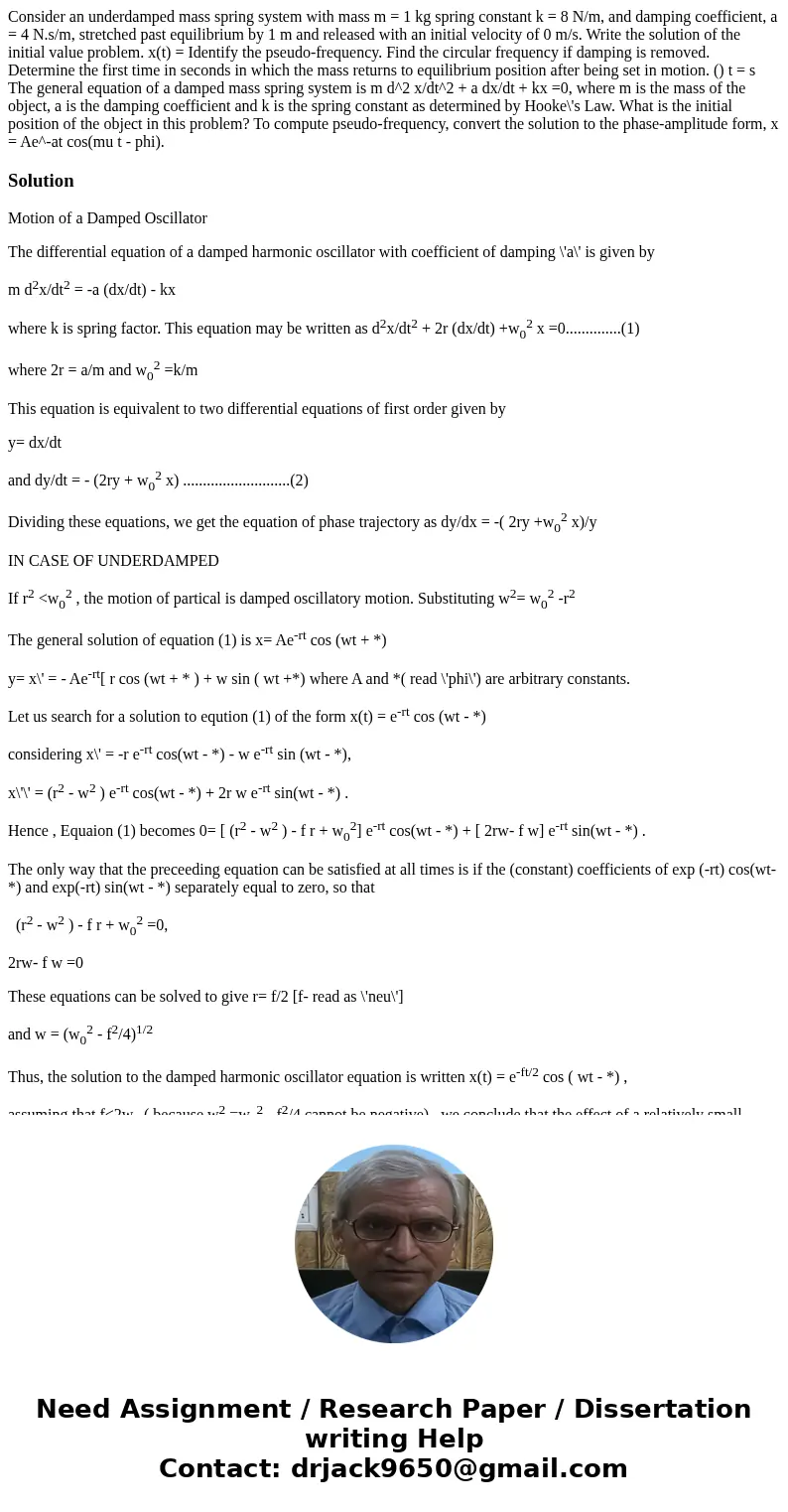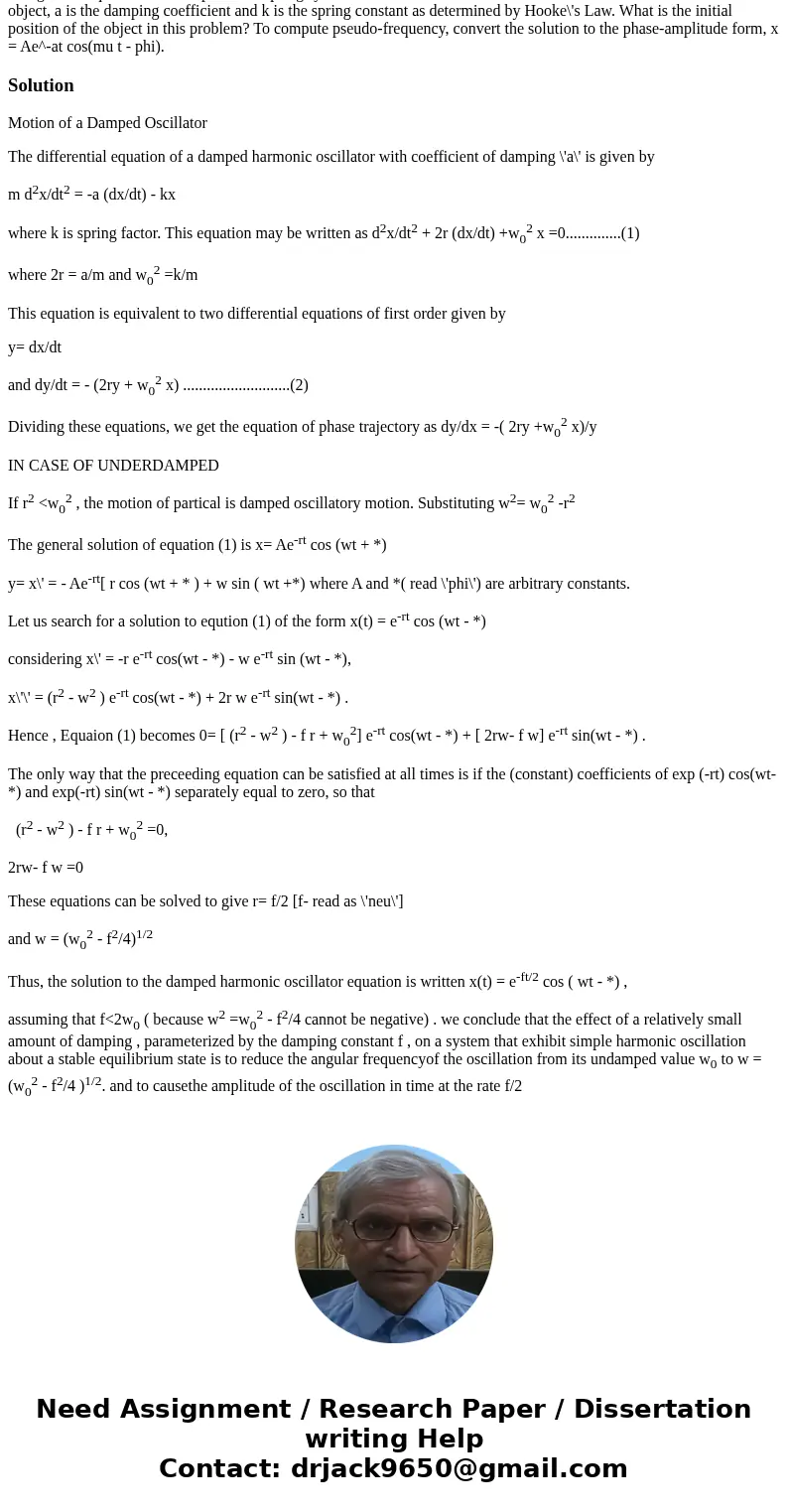Consider an underdamped mass spring system with mass m 1 kg
Solution
Motion of a Damped Oscillator
The differential equation of a damped harmonic oscillator with coefficient of damping \'a\' is given by
m d2x/dt2 = -a (dx/dt) - kx
where k is spring factor. This equation may be written as d2x/dt2 + 2r (dx/dt) +w02 x =0..............(1)
where 2r = a/m and w02 =k/m
This equation is equivalent to two differential equations of first order given by
y= dx/dt
and dy/dt = - (2ry + w02 x) ...........................(2)
Dividing these equations, we get the equation of phase trajectory as dy/dx = -( 2ry +w02 x)/y
IN CASE OF UNDERDAMPED
If r2 <w02 , the motion of partical is damped oscillatory motion. Substituting w2= w02 -r2
The general solution of equation (1) is x= Ae-rt cos (wt + *)
y= x\' = - Ae-rt[ r cos (wt + * ) + w sin ( wt +*) where A and *( read \'phi\') are arbitrary constants.
Let us search for a solution to eqution (1) of the form x(t) = e-rt cos (wt - *)
considering x\' = -r e-rt cos(wt - *) - w e-rt sin (wt - *),
x\'\' = (r2 - w2 ) e-rt cos(wt - *) + 2r w e-rt sin(wt - *) .
Hence , Equaion (1) becomes 0= [ (r2 - w2 ) - f r + w02] e-rt cos(wt - *) + [ 2rw- f w] e-rt sin(wt - *) .
The only way that the preceeding equation can be satisfied at all times is if the (constant) coefficients of exp (-rt) cos(wt- *) and exp(-rt) sin(wt - *) separately equal to zero, so that
(r2 - w2 ) - f r + w02 =0,
2rw- f w =0
These equations can be solved to give r= f/2 [f- read as \'neu\']
and w = (w02 - f2/4)1/2
Thus, the solution to the damped harmonic oscillator equation is written x(t) = e-ft/2 cos ( wt - *) ,
assuming that f<2w0 ( because w2 =w02 - f2/4 cannot be negative) . we conclude that the effect of a relatively small amount of damping , parameterized by the damping constant f , on a system that exhibit simple harmonic oscillation about a stable equilibrium state is to reduce the angular frequencyof the oscillation from its undamped value w0 to w = (w02 - f2/4 )1/2. and to causethe amplitude of the oscillation in time at the rate f/2


 Homework Sourse
Homework Sourse